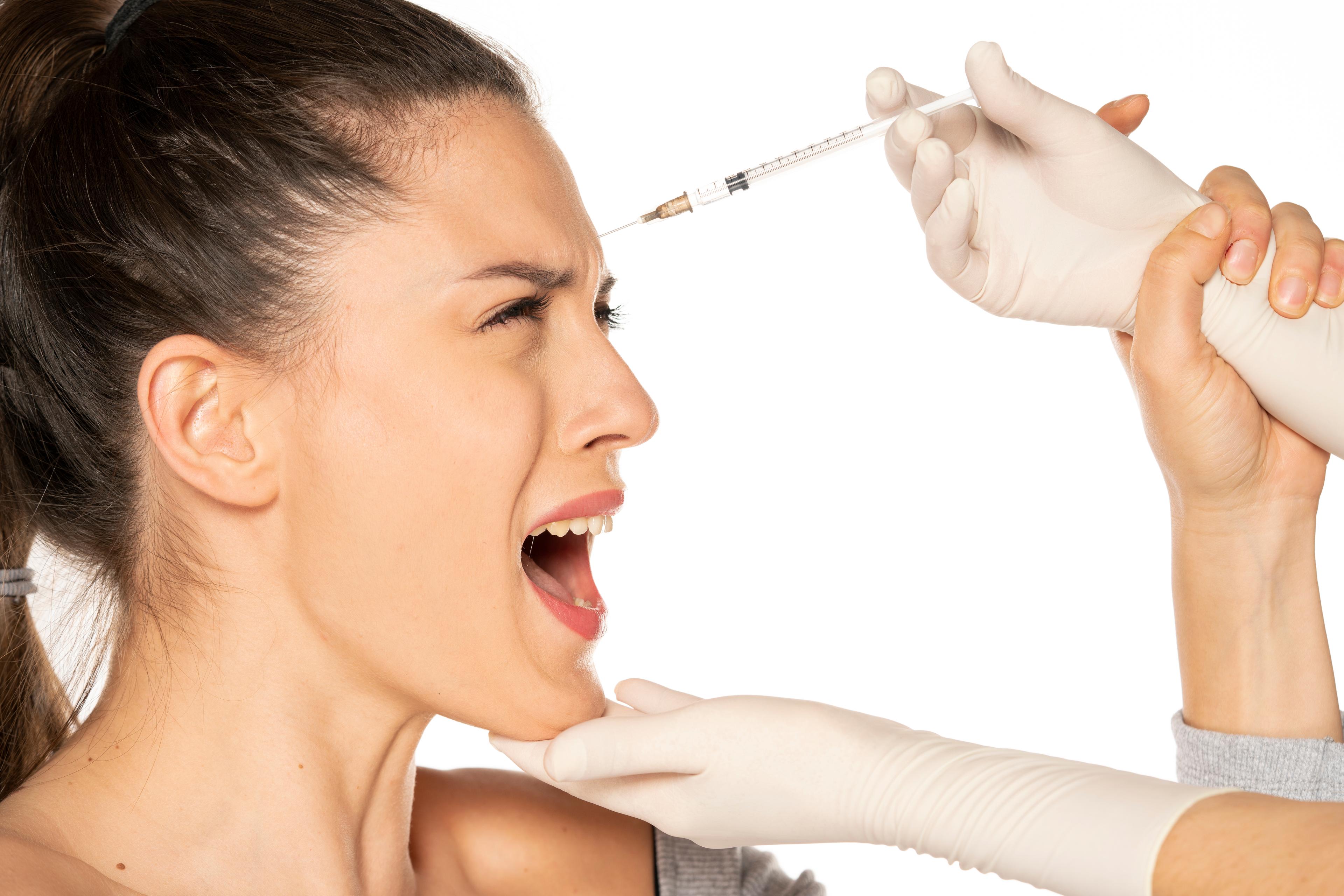Would you love an aesthetics treatment but petrified of needles and hate the thought of Botox and Fillers? Fear not! There are some incredible non-surgical aesthetic treatments that do not involve a needles in your face. In fact, Dr Malaika Smith has written the ultimate guide to no-needle aesthetic treatments, exclusively for Glowday!
Afraid of Needles? Alternatives to Botox and Fillers
There are many treatments you can enjoy which don't involve a needle, find and book yours today on Glowday.
Are aesthetics treatments all about the needle?
There is no denying that the aesthetics industry is booming, and with it has come a huge advancement in technology and cosmeceuticals to treat a variety of patients, even those that desire great results without resorting to needles. I often find that people associate “aesthetics” with “botox and fillers”, and understandably these treatments are not for everyone. I want to expand people’s understanding of what the industry is and all it can offer, especially for the needle phobic.
So what are the alternatives to Botox and Fillers?
Chemical Peels
A chemical peel is a very effective way to resurface the skin. It does this through chemical exfoliation using various acids to remove the dead skin cells responsible for making the skin appear dull and lacklustre. The acids used within chemical peels include glycolic acid, salicylic acid, and lactic acid, which work by breaking up the chemical bonds between skin cells, to allow them to slough off. Exfoliating away this layer reveals the healthy, fresh skin underneath and leaves you with a youthful glow. It is also a great treatment for fine lines and wrinkles, sun damage, hyperpigmentation, and blemish prone skin.
Not all chemical peels are the same, and no two people have the same skin complaints. Your aesthetic practitioner should work with you to choose the right peel for you. There are broadly 3 categories based on the level achieved, and this is usually linked with the strength of acid used (superficial, medium, and deep peels). Superficial peels, (for this I use the ZO Stimulator Peel or the Fillmed range), will rarely cause side effects or a visible peeling of the skin, the lack of downtime makes them a very attractive option for many. Medium depth peels, such as the ZO Skinhealth 3 step peel (other brands also available), will cause the upper layer of the skin to peel away, and can reach as far as the upper dermis. Deep peels, such as the ZO Skinhealth Controlled Depth Peel (which must be done under anaesthetic) can reach as far as the deep dermal layers of the skin, and have a long downtime period. For this reason, superficial peels (often referred to as the lunchtime peel), have very few contraindications, and can be repeated weekly if desired. Medium peels require a little more caution, and can be repeated every 3-4 weeks with strict aftercare protocols which must be adhered to for 5-7 days of downtime. Deep peels have up to 2 weeks of downtime and can only be repeated every 5-7 years.
LED Phototherapy
When most people hear “LED light” they think of the pretty coloured lights around their home, but what most do not know is that LED therapy has been extensively researched and clinically proven to target multiple skin concerns. It was originally used by NASA, to aid healing and recovery in space, and this technology is now available to us in the aesthetics industry.
The most important thing to consider with LED phototherapy is that the different colours correspond to the wavelengths of the light. What this means for example, is that a longer wavelength can penetrate deeper in to the skin, and can therefore offer different therapeutic benefits to the shorter wavelengths. For maximum benefit, treatments are best performed for 30 minutes, with the light as close to the skin as possible, and without occlusive masks and products affecting the absorption of the light. Best of all, it is completely pain free with absolutely no downtime!
So what do the different lights actually do? Some devices boast having 7 lights with multiple benefits, but there is no conclusive evidence to support this. The 3 wavelengths with the most supporting research and clinically proven benefits are: Blue; fantastic for acne as it tackles p.acne bacterium and sebum production, Red; good for fine lines and wrinkles by increasing fibroblast activity and collagen production, and Near Infrared; which penetrates deep down in the skin and subcutaneous layers which has been proven to aid wound healing and pain management.The next two most commonly used, are Green (for hyperpigmentation and to even out skin tone, and Amber (for tackling redness and sensitive skin).
There are many “at home” LED masks and devices available on the market, but always approach these with caution. They are not medical grade devices, so are much less powerful and could at best be a waste of money, and at worst cause harm such as burns and abrasions.
If you fancy some at-home LED therapy to complement your in-clinic treatments, CurrentBody is the first company to recognise one of the fastest growing trends in the world of beauty. With modern innovation allowing manufacturers to create devices that mimic the on-site devices used by professionals in salons, spas, and clinics, CurrentBody has brought together a complete selection available for home use technology.
Check out the full range here and bag yourself a 15% discount with the code GLOWDAY.
Microneedling (aka Collagen Induction Therapy)
Microneedling is a medical procedure using multiple very fine, sterile needles (within a cartridge attached to a pen - no syringes or visible needles here!).These fine needles are used to create multiple, controlled microinjuries to the skin, in order to switch on the body’s healing process, which in turn promotes collagen and elastin production, and helps to treat fine lines, wrinkles, scarring, stretch marks, large pores, hair loss, and pigmentation.This is one of our most popular treatments, especially when combined with mesotherapy serums or PRP (platelet-rich plasma, ie in a vampire/dracula facial) to boost skin health, and treat a range of skin concerns. Microneedling can also be used on the body to treat skin laxity, scars, stretch marks, cellulite, hyperpigmentation, vitiligo, acne, and so much more! With very little downtime, this is an affordable and less invasive alternative to traditional aesthetic procedures.
There is another method of microneedling, which uses a Dermaroller, however I would advise caution when using one of these devices as the injury caused to the skin can be unpredictable, and can cause more damage than healing. They are also often not single use/sterile, and therefore there is an increased risk of introducing infection into the skin.
Dr Malaika's patient before and after photo of microneedling treatment
Radiofrequency (with or without microneedling)
Radiofrequency was one of the first treatment options available for skin tightening. It uses electromagnetic energy (radio frequency waves) to heat the dermal layer of the skin - this in turn tightens the existing collagen fibres giving an immediate lift, and stimulates collagen production for a delayed and longer lasting skin tightening effect. This painless treatment has no downtime, and can be used on the face and the body, to achieve tighter, firmer skin with fewer fine lines and wrinkles, as well as damage caused by pollution, smoking, and the sun (these can all cause collagen fibres to break down in the skin).
Radiofrequency got a lot of very good press after Judy Murray revealed her results with Morpheus8 (there are other devices available) - which delivers radio frequency with micro needling - doubling down on your collagen production! Deemed an all round hero product for skin rejuvenation, treating fine lines & wrinkles, acne, scars, stretch marks, cellulite, pigmentation disorders, loose skin, and even excessive sweating, what’s not to love!
Judy Murray's before and after photos of Morpheus8, a treatment that uses radiofrequency which stimulates collagen production
HIFU
HIFU or High-intensity focused ultrasound, is another painless and non-invasive skin tightening treatment option that uses ultrasound energy to heat the dermis and promote collagen production. It has been widely used by physiotherapists to treat tendon and ligament injuries (using the same science to promote collagen), but has had a slower transition over to the aesthetic industry. The benefit of ultrasound energy is that it can be easily adjusted to focus and target on a certain depth, giving good control and flexibility to its use, and preventing any damage to the layers above.
Laser resurfacing
When discussing laser skin resurfacing treatments, it is important to point out that there are two different types: ablative lasers (such as CO2), and non-ablative (such as IPL).Ablative lasers are used to treat scars, pigmentation, and wrinkles. Non-ablative lasers are used to treat vascular concerns such as spider veins, rosacea, acne, etc. Both are great alternatives for those who have a fear of needles, but they are not cheap treatments to have, and ablative lasers come with a fair amount of downtime post treatment too.
Facial treatments such as Hydrafacial
HydraFacialTM is a fantastic non-invasive treatment option for anyone wanting a full face rejuvenation without the use of any needles. It is suitable for all skin types, and is completely pain free. The spiral design of the handpiece is used with the vacuum technology to create a vortex - delivering hydrating serums and removing impurities. This patented technology is used to cleanse, exfoliate, extract, and hydrate in various treatment protocols, including detox (lymphatic drainage to help eliminate toxins), cleanse and peel (to exfoliate and reveal new healthy skin underneath), extract & protect (to remove debris from the pores and infuse hydration into the skin), fuse & protect (saturating the skin with antioxidants and peptides to make it glow), and rejuvenation (to stimulate collagen production and reduce redness and inflammation.
Using multiple and customisable treatment combinations, the hydrafacial machine can target fine lines and wrinkles, pigmentation, and oily/congested skin, as well as improving even skin tone, vibrancy, skin firmness, and elasticity.
One of the reasons why HydraFacial is so popular is because the effects are immediately visible, and there is no downtime, meaning that you can get that Glowup in your lunch break.It is recommended that you have a course of 6 treatments 2 weeks apart for best, longer lasting results. However some people also benefit from a one off treatment prior to a special event, such as a wedding.
Advances that have and are continuously being made in the aesthetics industry mean that the variety of different treatment options make it accessible to people who have a fear of needles, who previously may have felt unable to access aesthetics treatments previously. To assess your suitability for any of the above treatments, please contact your aesthetic practitioner for a full consultation.
If you're interested in any of these treatments you can find a practitioner in your area and book in directly right here

